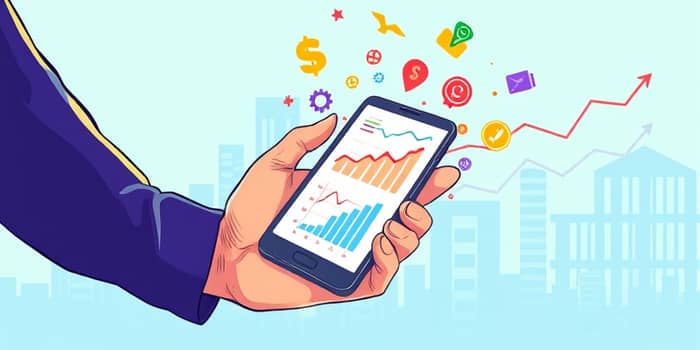
In today’s fast-paced world, managing money can feel like trying to tame a tempest. Between bills, subscriptions, and daily expenses, it’s easy to lose track of where every dollar goes. Budgeting apps have emerged as indispensable allies, offering a blend of innovation and simplicity to guide users toward financial clarity.
With smartphones in hand and cloud-based tools at our fingertips, we now have real-time visibility into spending and savings like never before. These digital assistants transform complex ledgers into intuitive charts, empower us to set meaningful goals, and keep us accountable on the path to financial wellness.
Gone are the days of paper envelopes and manual spreadsheets. Mobile devices have revolutionized how people manage money, creating a shift toward accessible financial guidance anytime. Consumers seek tools that not only track expenses but also deliver insights that drive better decisions.
As digital banking expands, budgeting apps leverage APIs and secure encryption to sync accounts in moments. This hands-off aggregation of transactions removes tedious data entry, allowing users to focus on setting priorities instead of reconciling columns.
At their core, budgeting apps combine automation, personalization, and visualization to support users. From zero-based budgeting to envelope-style planning, these platforms adapt to individual preferences, ensuring everyone finds a framework that resonates.
By merging these features, apps offer powerful data visualization tools that turn raw numbers into actionable insights. Users can see their financial landscape at a glance, compare spending against budgets, and celebrate milestones when targets are met.
The personal finance app market has witnessed explosive expansion. In 2024, it reached approximately USD 17.75 billion, with projections anticipating a rise to USD 21.4 billion by 2025. Broader estimates value the finance apps sector at over USD 101.75 billion in 2023, poised to surge to USD 675 billion by 2032 at a 23.4% CAGR.
Mobile-first regions like South Korea and Japan are leading adoption, with CAGRs of 16.6% and 16.4%, respectively. North America is set to hold 24.3% of the personal finance mobile market by 2034, with iOS accounting for 35.6% of app usage.
This remarkable growth underscores consumers’ hunger for digital solutions that streamline money management and enhance financial literacy on every device.
Selecting the ideal budgeting app depends on your goals, tech comfort level, and preferred budgeting style. Beginners may prioritize ease of use, while power users look for deep customization and reporting capabilities.
Reviewing this comparison helps you pinpoint which features align with your lifestyle—whether it’s hands-on budget crafting or automated recommendations that handle the heavy lifting.
Budgeting apps bring profound advantages: they foster accountability, highlight spending patterns, and support goals like building an emergency fund or paying off debt faster. Automated reminders and visual dashboards motivate users to stay on track and celebrate progress.
However, challenges remain. Data privacy is a top concern for many, prompting apps to continuously invest in encryption and secure protocols. Additionally, the sheer number of options can overwhelm newcomers, making it difficult to find the right fit without trial and error.
Financial planners recommend integrating budgeting and investment tracking within a single platform. Consolidating spending, savings, and portfolios offers a holistic financial picture that informs smarter decisions about asset allocation and risk management.
Consider Sarah, who used an envelope-budgeting app to curb dining-out expenses. By assigning a weekly limit and receiving alerts when funds ran low, she redirected savings toward a down payment fund. Or Jason, who leveraged AI-driven recommendations to adjust subscription services, saving hundreds annually without missing crucial memberships.
As we look ahead, budgeting apps will continue evolving with innovative AI-driven insights that anticipate spending patterns, suggest tailored saving opportunities, and even negotiate bills on behalf of users. Integrated platforms will merge banking, insurance, investments, and budgeting into unified dashboards, simplifying every aspect of personal finance.
Ultimately, these digital assistants empower individuals to replace financial anxiety with confidence. By harnessing the power of technology, anyone can shape their monetary destiny, set ambitious goals, and embrace a future defined by clarity, control, and lasting prosperity.
References













